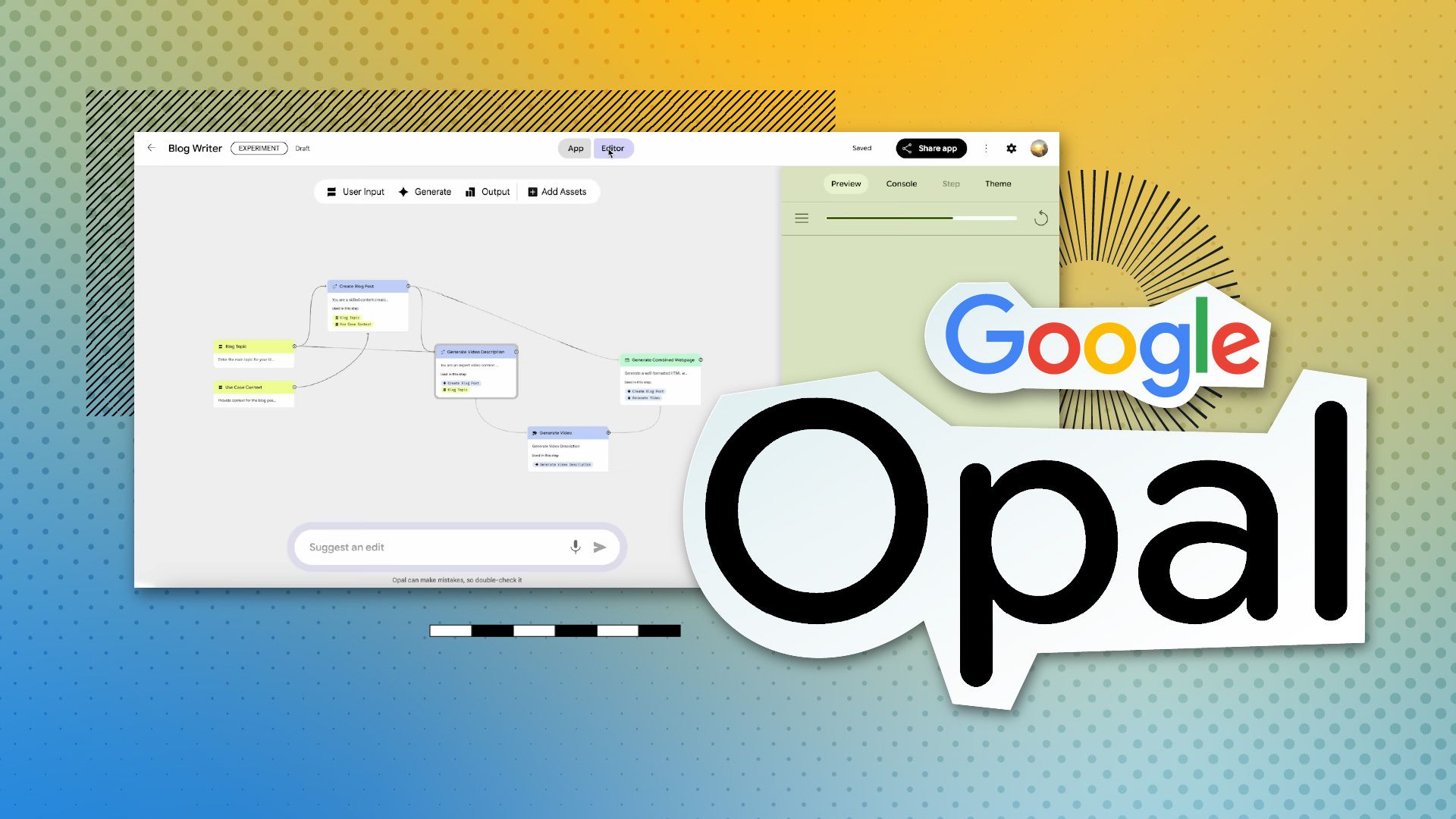Google Labs has launched Opal, an experimental tool that lets users build AI-powered mini-apps using natural language and visual workflows instead of traditional coding. No-code AI application development, visual workflow editing, and community app remixing position this platform as a potential bridge between complex development environments and the rapid prototyping needs of creative professionals.
The tool arrives at a time when film and media professionals increasingly need custom AI solutions for everything from script analysis to automated content tagging, but often lack the technical expertise to build them from scratch.
Behind the Scenes: This tool transforms everyday language into functional AI workflows without requiring programming knowledge.
Opal operates on a simple premise: describe what you want your app to do, and the platform automatically converts those instructions into a visual workflow. Users can then fine-tune each step through point-and-click editing, adjusting prompts, adding AI model calls, or connecting Google services.
The platform's core strength lies in its ability to chain together multiple AI operations. For media professionals, this could mean building apps that automatically transcribe interview footage, generate social media captions, and organize content by themes—all within a single workflow.
Key features include:
Natural language programming that converts conversational descriptions into structured workflows
Visual editing interface allowing granular control over each workflow component
AI-powered coding environment with real-time debugging and code explanations
Community gallery where users can remix and adapt existing apps
Seamless Google integration for accessing existing tools and services
Production Pipeline: Creators can prototype AI tools for specific workflow needs without technical barriers.
The platform's educational focus makes it particularly valuable for creative teams looking to experiment with AI integration. Rather than waiting for software vendors to add specific features, production teams could prototype their own solutions for common challenges.
Potential applications for media professionals include:
Content analysis tools that categorize footage by mood, lighting conditions, or subject matter
Script processing apps that extract character dialogue patterns or identify potential budget impacts
Social media automation that generates platform-specific content from source material
Quality control workflows that flag technical issues in raw footage
The visual workflow approach means team members can understand and modify these tools without deep technical knowledge, making it easier to adapt solutions as project needs evolve.
Community Backlot: The remix culture encourages collaborative tool development and knowledge sharing.
One of Opal's standout features is its approach to community sharing. Users can publish their apps as web links, allowing others to test functionality immediately with just a Google account. More importantly, the platform encourages "remixing"—duplicating and adapting existing apps for new purposes.
This model could prove particularly valuable for the media industry, where similar challenges exist across different types of productions. A documentary team's footage analysis tool could be remixed by a commercial production company for brand safety compliance, or a podcast editing workflow could be adapted for video post-production.
The gallery concept also serves as a learning resource, allowing creators to see how others have solved similar problems and understand the logic behind successful AI workflows.
Technical Specs: Current limitations include US-only availability and focus on mini-apps rather than production-scale tools.
As an experimental Google Labs product, Opal comes with several important caveats. The current beta is limited to US users, and the platform is designed specifically for lightweight applications rather than enterprise-scale solutions.
The tool lacks the advanced debugging and deployment capabilities found in traditional development environments, positioning it more as a prototyping and educational platform than a replacement for professional development tools. Integration with external libraries and services beyond Google's ecosystem remains limited.
However, these constraints may actually benefit creative professionals who need quick solutions rather than complex applications. The focus on "mini-apps" aligns well with the specific, targeted tools that many media workflows require.
The Final Cut: This democratization of AI development could accelerate custom tool creation across creative industries.
Opal represents a significant shift toward making AI development accessible to non-technical creators. By removing coding barriers and emphasizing visual workflows, Google is betting that the future of AI application development lies in prompt design and logical thinking rather than traditional programming skills.
For the media industry, this could mean faster iteration on workflow solutions and reduced dependence on external software vendors for specialized tools. As the platform evolves beyond its experimental status, expect to see creative teams building increasingly sophisticated AI assistants tailored to their specific production needs.
The real test will be whether this approach can scale from simple prototypes to the robust, reliable tools that professional media workflows demand.


